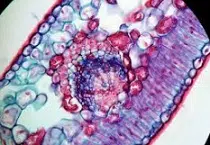 Histology is the branch of anatomy focused on the analysis of the body's tissues . It is the discipline that studies from the microscopic level of tissues to their functions.
Histology is the branch of anatomy focused on the analysis of the body's tissues . It is the discipline that studies from the microscopic level of tissues to their functions.
The Italian Marcello Malpighi (1628-1694) is noted as the founder of histology. This biologist and anatomist was the one who detected living cells for the first time. Thanks to increasingly powerful microscopes , histology advanced throughout the 17th century and in the following years.
Starting from the microscopic structure of tissues, histology generates knowledge about the organization, interrelationships and functioning of the various individual components of the organism. That is why it is very important for biology and medicine , among other sciences.
It is possible to distinguish between animal histology (which revolves around animal tissues ) and plant histology (plant tissues). In animal tissues, in turn, we can differentiate between nervous tissue, muscle tissue, epithelial tissue and connective tissue. Each of them is detailed below:
* nervous tissue : this is the set of billions of neurons with their respective interconnections, which gives rise to a highly complex communication system. Each neuron has its receptors, which are found in its terminals and specialize in the perception of different kinds of stimuli, such as chemical, mechanical or thermal, among others, and in the translation of them to convert them into nervous impulses that they may later be prosecuted;
* muscle tissue : it is made up of a series of contractile cells known as myocytes . These specialize in generating movement through the interaction of proteins also called contractile proteins, which are myosin and actin. This type of tissue, of interest to animal histology, uses chemical energy called ATP or adenosine triphosphate . In our body, it represents between 40 and 45 percent of our total mass;
 * epithelial tissue : also known as epithelium . It is one or more layers of cells that serve to cover all free areas of the body. They also fulfill the function of lining the interior of cavities, ducts and hollow organs, in addition to forming glands and mucous membranes. On the other hand, they form one of the main concepts of histology, the parenchyma , which is defined as a tissue that has a specific function, for example, for the organ to which it belongs;
* epithelial tissue : also known as epithelium . It is one or more layers of cells that serve to cover all free areas of the body. They also fulfill the function of lining the interior of cavities, ducts and hollow organs, in addition to forming glands and mucous membranes. On the other hand, they form one of the main concepts of histology, the parenchyma , which is defined as a tissue that has a specific function, for example, for the organ to which it belongs;
* connective tissue : another name by which this concept is known is connective tissue . It is formed by organic tissues that arise from the same origin and have the function of supporting the various parts of the animal organism, keeping them together (what is called cohesion ), as well as separating certain elements or even distributing certain neurovascular structures. In this group, specialized conjunctives can be distinguished from non-specialized ones.
Histological techniques are operations that allow biological tissues to be prepared for observation and study using a microscope. In this way, the professional can work with those structures that are not visible to the human eye.
As a first step, a tissue sample must be obtained, for which a procedure known as a biopsy (tissue extraction) is usually used. Then the fabric has to be placed in a fixative substance (such as formalin ) so that it retains its shape. Washing to remove excess fixative, placing the sample in paraffin, making histological sections and staining are other stages prior to the observation itself.
